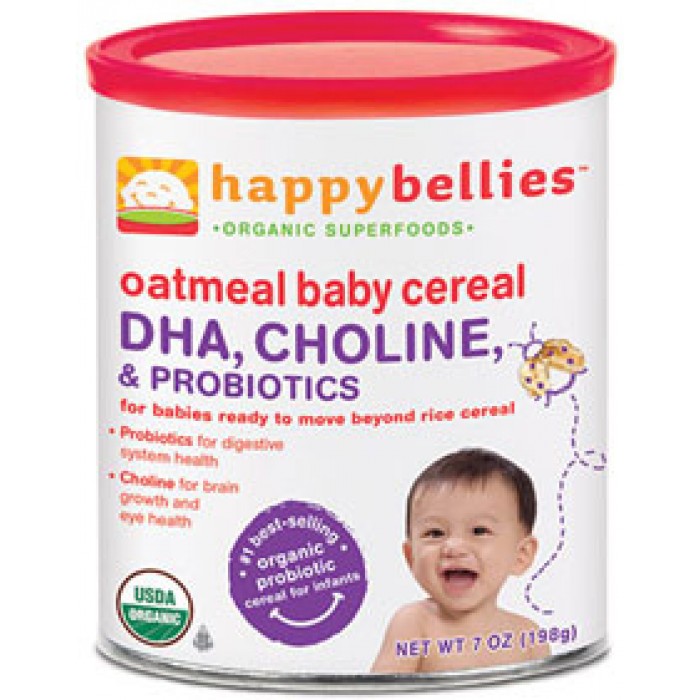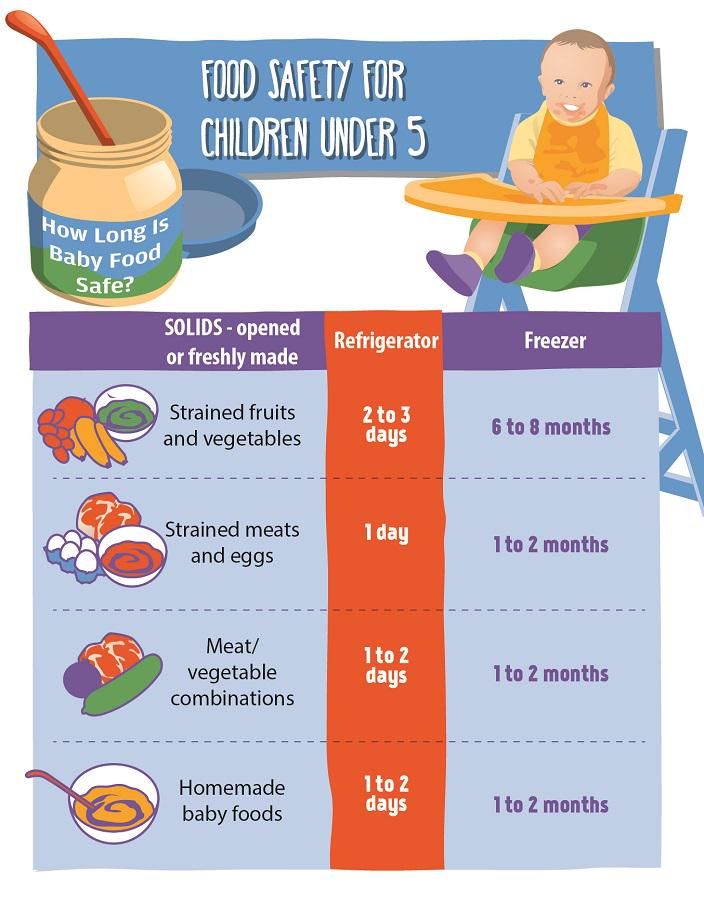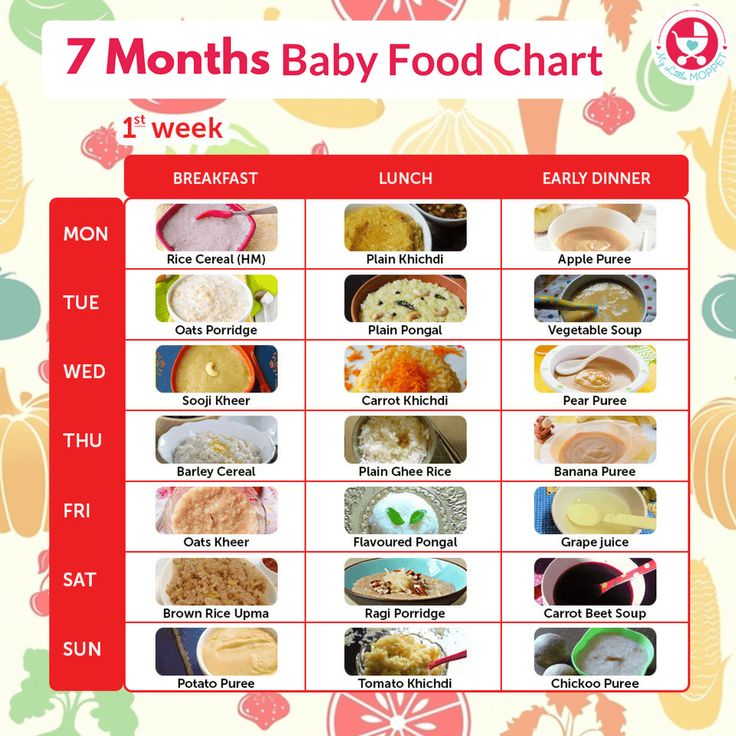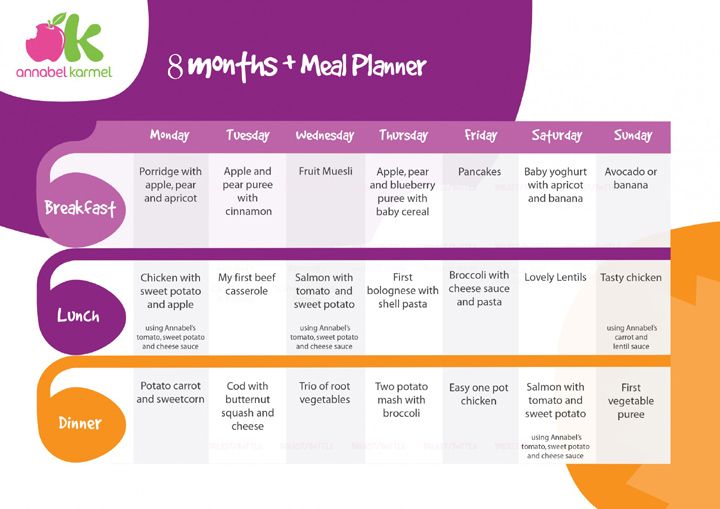Feeding schedule when starting baby food
Sample Schedules for Starting Solids (6 to 12 Months)
Looking for sample schedules for starting solids? Ideas for how to introduce solids on a schedule. Including sample feeding schedule for 6 months old and beyond.
Ready to start solids with your babe? This is an exciting time!
Here’s everything you need to know about introducing solids safely including sample schedules for starting solids from 6 months to 12 months, plus recommended menu items.
Is Baby Ready for Solids?
The most important thing to consider as your baby approaches the 4-6 month mark, is whether they are showing signs of feeding readiness.
This includes things like:
- Baby is 6 months old (there is no benefit to starting solids before 4 months at the earliest)
- They are interested in food they see around them
- Baby is losing their tongue thrust reflex that keeps food out of their mouth
- They are sitting up on their own for at least 60 seconds at a time
If your baby is showing these signs, great! It’s time to start introducing some solids.
Note that baby should continue receiving breast milk and/or formula for at least the first year of life, as you begin the transition to solid foods.
What Are the Benefits of Solids?
Eventually, your baby’s diet will be predominantly solid foods, but it takes some time to get there.
Solid foods expose your baby to a wide variety of textures, shapes, consistencies, and colors. They’re also important for nutrition, providing an array of vitamins, minerals, fiber, protein, fat, and energy.
Eating solids is also important for physical growth and development. As your baby matures, they become prepared to try new foods and get more of their nutrients from solids than breast milk/formula.
Plus, it’s fun to play with and try new foods!
However you decide to introduce solids – using a traditional spoon-feeding/puree approach or a baby-led weaning approach – your baby benefits from the nutrition and exposure.
Recommended Solid Foods for Babies
Below are some nutritious first foods that have worked well for us:
- Tofu
- Avocado
- Oatmeal
- Hummus
- Pancakes
- Soft fruits, like bananas, kiwi, mango
- Soft-cooked vegetables, like zucchini, sweet potato, and broccoli
- Beans, peas, lentils
- Toast, cut into strips
As you design your baby’s menu, these are some great nutrient-dense foods to incorporate that can also be prepared and served in an age-appropriate way.
For a list of foods to avoid when starting solids, see this blog post.
Sample Schedules for Starting Solids
How you choose to design your baby’s solid feeding schedule depends on several things, including what your daily routine looks like.
We recommend beginning with 1 solid food meal per day for 6-month-old babes and increasing to 3 meals per day for 9-month-old babies.
Between these milestones, continue to slowly add new foods and increase how many meals/snacks you’re offering.
By 12 months old, your baby will be eating 3 meals and a few snacks per day of solid foods, using breast milk and/or milk/milk alternatives (e.g., fortified unsweetened soy or pea milk) as needed.
Keep in mind that it can take 10-15 times of offering a food before a baby even tries it, or decides whether they like it. If your baby doesn’t seem to be interested in a certain food, keep offering.
Below are a few example feeding schedules for offering solids to babes at least 6 months old.
Feeding Schedule for 6 Months
- 7am: Breastfeed/bottle feed
- 8am: Breakfast – Iron-fortified baby oat cereal, peeled sliced peaches, avocado strips
- 11am: Breastfeed/bottle feed
- 2pm: Breastfeed/bottle feed
- 5pm: Breastfeed/bottle feed
- 7pm: Breastfeed/bottle feed
Note that you may continue to breastfeed/bottle feed babies this age during the night if they are still waking up.
Feeding Schedule for 9 Months
- 7am: Breastfeed/bottle feed
- 8am: Breakfast – Pancake strips, chopped raspberries and bananes
- 11am: Breastfeed/bottle feed
- 12pm: Lunch – Penne pasta with tomato sauce, green peas, melon slices with skin and seed removed
- 3pm: Breastfeed/bottle feed
- 5pm: Breastfeed/bottle feed
- 6pm: Dinner – Smashed black beans, tofu strips drizzled with thinned nut butter, sliced orange sections with outer membranes and pith removed
- 7pm: Breastfeed/bottle feed
Feeding Schedule for 12 Months
- 7am: Breast milk or milk/milk alternative
- 8am: Breakfast – Toast strips with mashed avocado, half of a banana (remove 2 inches of the skin, leaving the rest of the peel for easy handling)
- 10am: Mid-morning snack – chopped watermelon, diced grapes, hummus
- 12pm: Lunch – Quinoa-based veggie burger patty, steamed cauliflower and beet strips
- 3pm: Afternoon snack + breast milk or milk/milk alternative
- 6pm: Dinner – Lightly fried tempeh strips, kidney beans, roasted sweet potato cubes, steamed cucumber
- 7pm: Breast milk or milk/milk alternative
We hope these sample schedules for starting solids are helpful when your baby is ready for first foods. When you introduce solids on a schedule, this can help alleviate some of the stress of feeding while nourishing your baby well. Have fun with it!
When you introduce solids on a schedule, this can help alleviate some of the stress of feeding while nourishing your baby well. Have fun with it!
Chime In: If you’ve already done solids with your babe, what has your schedule looked like? Any other tips for new parents?
If you found this post helpful, we suggest you read these too:
- Spoon Feeding vs. Baby-Led Weaning
- Do Babies Really Need 11mg of Iron a Day?
- Plant-Based Baby-Led Weaning Grocery List
- How to Wean Baby to Plant-Based Milk
When, What, and How to Introduce Solid Foods | Nutrition
For more information about how to know if your baby is ready to starting eating foods, what first foods to offer, and what to expect, watch these videos from 1,000 Days.
The Dietary Guidelines for Americans and the American Academy of Pediatrics recommend children be introduced to foods other than breast milk or infant formula when they are about 6 months old. Introducing foods before 4 months old is not recommended. Every child is different. How do you know if your child is ready for foods other than breast milk or infant formula? You can look for these signs that your child is developmentally ready.
Introducing foods before 4 months old is not recommended. Every child is different. How do you know if your child is ready for foods other than breast milk or infant formula? You can look for these signs that your child is developmentally ready.
Your child:
- Sits up alone or with support.
- Is able to control head and neck.
- Opens the mouth when food is offered.
- Swallows food rather than pushes it back out onto the chin.
- Brings objects to the mouth.
- Tries to grasp small objects, such as toys or food.
- Transfers food from the front to the back of the tongue to swallow.
What Foods Should I Introduce to My Child First?
The American Academy of Pediatrics says that for most children, you do not need to give foods in a certain order. Your child can begin eating solid foods at about 6 months old. By the time he or she is 7 or 8 months old, your child can eat a variety of foods from different food groups. These foods include infant cereals, meat or other proteins, fruits, vegetables, grains, yogurts and cheeses, and more.
If your child is eating infant cereals, it is important to offer a variety of fortifiedalert icon infant cereals such as oat, barley, and multi-grain instead of only rice cereal. Only providing infant rice cereal is not recommended by the Food and Drug Administration because there is a risk for children to be exposed to arsenic. Visit the U.S. Food & Drug Administrationexternal icon to learn more.
How Should I Introduce My Child to Foods?
Your child needs certain vitamins and minerals to grow healthy and strong.
Now that your child is starting to eat food, be sure to choose foods that give your child all the vitamins and minerals they need.
Click here to learn more about some of these vitamins & minerals.
Let your child try one single-ingredient food at a time at first. This helps you see if your child has any problems with that food, such as food allergies. Wait 3 to 5 days between each new food. Before you know it, your child will be on his or her way to eating and enjoying lots of new foods.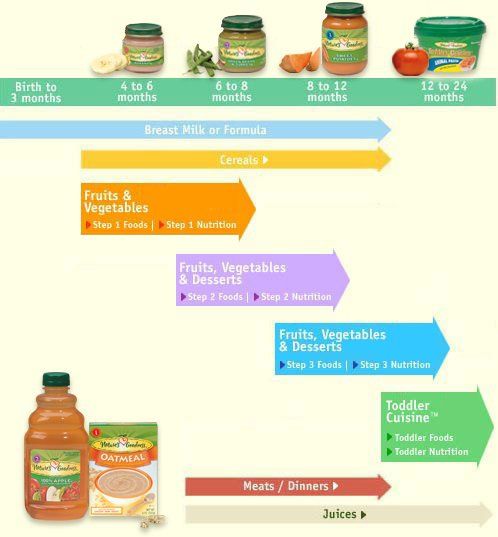
Introduce potentially allergenic foods when other foods are introduced.
Potentially allergenic foods include cow’s milk products, eggs, fish, shellfish, tree nuts, peanuts, wheat, soy, and sesame. Drinking cow’s milk or fortified soy beverages is not recommended until your child is older than 12 months, but other cow’s milk products, such as yogurt, can be introduced before 12 months. If your child has severe eczema and/or egg allergy, talk with your child’s doctor or nurse about when and how to safely introduce foods with peanuts.
How Should I Prepare Food for My Child to Eat?
At first, it’s easier for your child to eat foods that are mashed, pureed, or strained and very smooth in texture. It can take time for your child to adjust to new food textures. Your child might cough, gag, or spit up. As your baby’s oral skills develop, thicker and lumpier foods can be introduced.
Some foods are potential choking hazards, so it is important to feed your child foods that are the right texture for his or her development. To help prevent choking, prepare foods that can be easily dissolved with saliva and do not require chewing. Feed small portions and encourage your baby to eat slowly. Always watch your child while he or she is eating.
To help prevent choking, prepare foods that can be easily dissolved with saliva and do not require chewing. Feed small portions and encourage your baby to eat slowly. Always watch your child while he or she is eating.
Here are some tips for preparing foods:
- Mix cereals and mashed cooked grains with breast milk, formula, or water to make it smooth and easy for your baby to swallow.
- Mash or puree vegetables, fruits and other foods until they are smooth.
- Hard fruits and vegetables, like apples and carrots, usually need to be cooked so they can be easily mashed or pureed.
- Cook food until it is soft enough to easily mash with a fork.
- Remove all fat, skin, and bones from poultry, meat, and fish, before cooking.
- Remove seeds and hard pits from fruit, and then cut the fruit into small pieces.
- Cut soft food into small pieces or thin slices.
- Cut cylindrical foods like hot dogs, sausage and string cheese into short thin strips instead of round pieces that could get stuck in the airway.

- Cut small spherical foods like grapes, cherries, berries and tomatoes into small pieces.
- Cook and finely grind or mash whole-grain kernels of wheat, barley, rice, and other grains.
Learn more about potential choking hazards and how to prevent your child from choking.
Top of Page
newborn feeding regimen on IV, how to properly feed a baby with formula from a bottle
The desire for a child to grow up strong and healthy is natural for mothers. And the health of a newborn begins with proper nutrition. The best option for feeding at all times was considered mother's milk - the most useful and nutritious food for infants. However, in some cases, breastfeeding is not possible. And then mixtures come to the aid of mothers.
Contents: Hide
- In what cases is the transition to artificial feeding
- How to choose a mixture of
- Basic rules of artificial feeding
- Food mode
- Main errors under artificial feeding
in what cases is required an artificial feeding 29000 Medical Medical Medical Medical to breastfeeding.
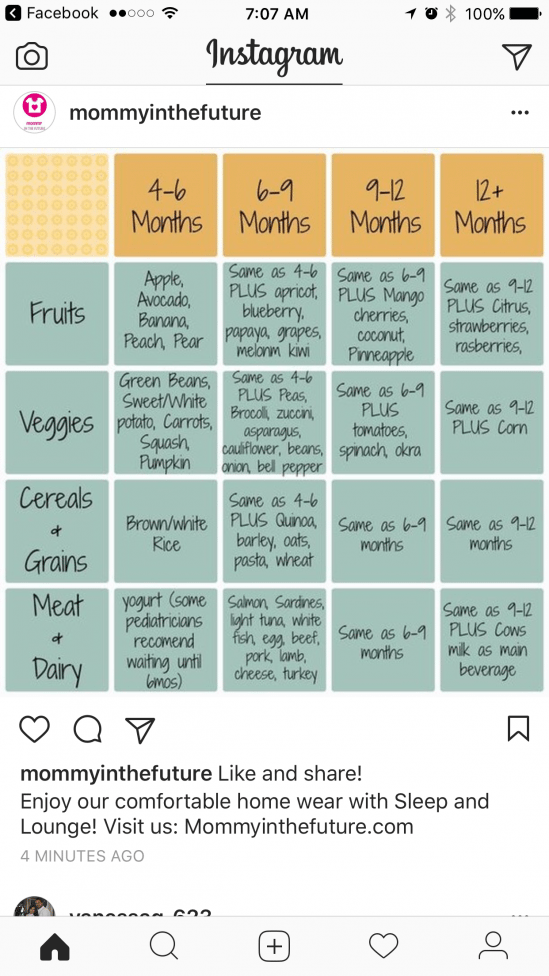 There are a number of diseases in which breast milk is prohibited. On the mother's side, these are HIV, an open form of tuberculosis, dangerous infections, and a serious state of health. On the part of the child, these are leucinosis, galactosemia, and individual food intolerance. It is not necessary to take tests after hearing the terrible names of diseases. All newborns are checked in maternity hospitals for their presence. But allergies are not so easy to identify. Many newborns have skin rashes and redness, which may be due to a reaction to an aggressive environment. Only a strict diet for the mother can help here, so that her milk does not contain allergens, monitoring the baby and consulting a doctor.
There are a number of diseases in which breast milk is prohibited. On the mother's side, these are HIV, an open form of tuberculosis, dangerous infections, and a serious state of health. On the part of the child, these are leucinosis, galactosemia, and individual food intolerance. It is not necessary to take tests after hearing the terrible names of diseases. All newborns are checked in maternity hospitals for their presence. But allergies are not so easy to identify. Many newborns have skin rashes and redness, which may be due to a reaction to an aggressive environment. Only a strict diet for the mother can help here, so that her milk does not contain allergens, monitoring the baby and consulting a doctor. Lack of lactation or its complete cessation. This is the second objective reason for transferring a child from breast milk to formula. Lactation does not always come in the right amount and it can be increased. It happens that milk disappears a few days after the birth of the crumbs. This often depends on the individual characteristics of the mother's body. So that the child does not starve, he is first transferred to mixed, and then completely to artificial feeding.
This often depends on the individual characteristics of the mother's body. So that the child does not starve, he is first transferred to mixed, and then completely to artificial feeding.
Insufficient nutritional value of mother's milk. Usually this problem can be solved without resorting to the transition to IoT, but this is not always possible. A woman may have a lot of milk, but it will be like water in both color and consistency. In such cases, doctors give advice to the mother on nutrition in order to increase the fat content of milk and its usefulness. If the milk remains watery, the child stops eating, cries of hunger, loses weight. The only way out in this situation is the transition to the mixture.
Impossibility of regular feeding. Children who, for a number of reasons, are separated from their mother for long periods of time are transferred to artificial feeding: the woman is in a hospital, going to work or study, business trips, etc. If the break in breastfeeding is one-time, then restoring lactation and breastfeeding is still possible . However, more often in such cases, breastfeeding has to be abandoned.
However, more often in such cases, breastfeeding has to be abandoned.
Mother's personal wish. Unfortunately, there are cases when a woman, having every opportunity to breastfeed her baby, refuses to breastfeed for various subjective reasons. In this case, lactation is interrupted, and the baby is transferred to the mixture.
Read also: Newborn weight gain by month
How to choose a formula
If you are going to transfer your baby to artificial feeding, then the first thing you will encounter will be the choice of nutrition. Today there are a large number of different mixtures: adapted and non-adapted, dairy and sour-milk, dry and liquid. There are mixtures against regurgitation, hypoallergenic, for premature babies, etc. How to choose the optimal replacement for mother's milk from such a variety?
- Make your choice only after consulting a pediatrician. The doctor will examine the baby and give all the necessary recommendations.
- Monitor your child.
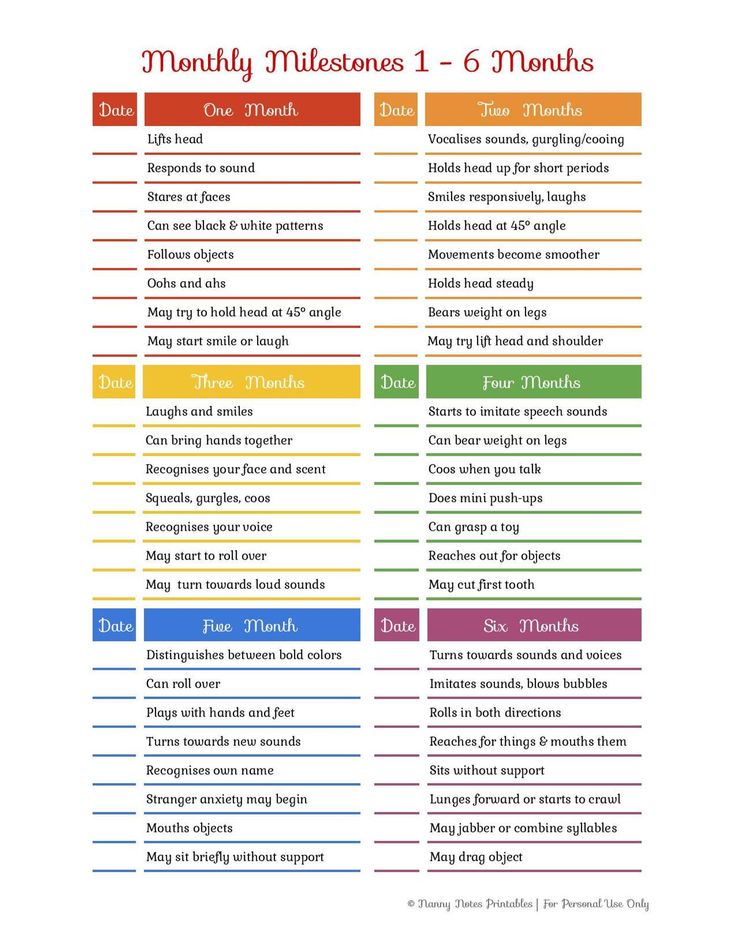 When adapting to a new diet, the child may have small rashes, but they disappear if the body begins to absorb the mixture normally. The baby eats with appetite, he has a normal stool and no colic. Otherwise, the mixture must be changed.
When adapting to a new diet, the child may have small rashes, but they disappear if the body begins to absorb the mixture normally. The baby eats with appetite, he has a normal stool and no colic. Otherwise, the mixture must be changed. - If it is necessary to replace the mixture with a thicker formula (anti spit up), choose the same brand of food that was previously used.
- Consider the age of the baby. All mixtures have a gradation by months of life.
- Prefer adapted formulas, they are usually easier to digest
Basic rules for formula feeding save you a lot of problems.
1. Choose proven blends. This applies not only to the choice of brand, but also to the packaging itself. Look at its integrity, check the expiration date.
2. Observe the storage conditions for opened packaging at home (in a dry and cool place, but in no case in the refrigerator, the mixture must not become damp). Remember that the open mixture is stored for three weeks. After this period, it can no longer be used.
After this period, it can no longer be used.
3. Strictly follow the instructions when preparing meals. It is indicated on the packaging. Water for the preparation of the mixture must be purified and boiled. The optimal temperature for preparing the mixture is 36–37 °C. You can cook food right in the bottle. This is quite convenient, since baby bottles have a volume scale that makes it easier to calculate the right amount of scoops. The mixture must be stirred until completely dissolved, and then cooled to an acceptable temperature so that the baby can drink without burning himself. You can check if the milk is hot by dropping it on your wrist - there the skin is most tender and sensitive. If the temperature is almost not felt, then the mixture can be given to the child.
4. Sterilize baby dishes. Baby bottles and nipples should be thoroughly rinsed using a special brush so that no food residue remains. You can use children's dishwashing detergents. Do not wash bottles with common cleaning products that you are used to using, no matter how good they are. After washing, be sure to place the dishes in boiling water. This helps to kill harmful bacteria. It is recommended to sterilize children's dishes during the entire first year of a baby's life. Then you can limit yourself to just a thorough wash.
After washing, be sure to place the dishes in boiling water. This helps to kill harmful bacteria. It is recommended to sterilize children's dishes during the entire first year of a baby's life. Then you can limit yourself to just a thorough wash.
5. Hold the bottle in a semi-vertical position when feeding. The milk should completely fill the nipple. This prevents the child from swallowing air. After feeding, it is necessary to hold the baby in a column for several minutes to avoid spitting up.
6. Monitor the amount of formula consumed and the feeding schedule. Maintaining a balance is extremely important for the healthy and full development of the baby.
- Calculate the amount of formula to be prepared based on the baby's weight. It is body weight, and not the age of the crumbs, that is the main indicator when calculating the daily nutritional intake. You can find out the required volume of the mixture for feeding either at the pediatrician’s appointment, or on your own (it is recommended to use Maslov’s caloric method when calculating).
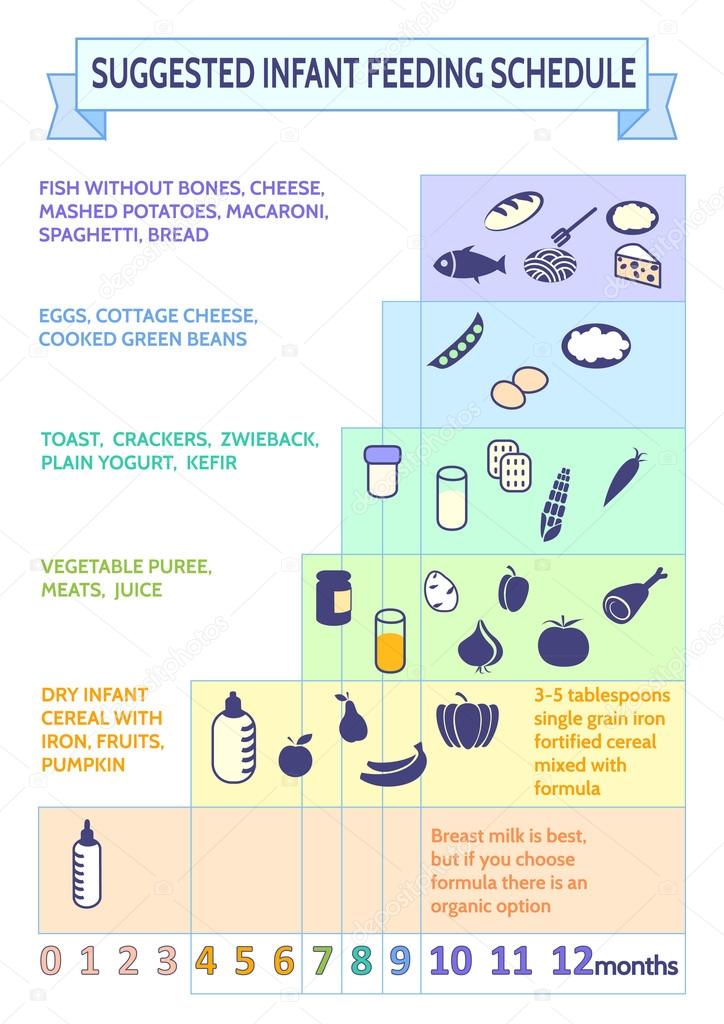
- Observe breaks between feedings. During the day they should be 3.5 hours, at night - 6. Try not to break the schedule.
- Give your child water. Supplementation with water is a necessity for artificial feeding. Water should be given somewhere in the middle of the interval between feedings or 10-15 minutes after it. Avoid supplementation before meals.
Major mistakes in artificial feeding
Overfeeding. The desire to feed the child is understandable, but in the case of mixtures, feeding must be approached strictly. On artificial feeding, the child is normally gaining weight very well. Excess body weight is an additional burden on the body and health problems. Even an adult can find it difficult to cope with problems from being overweight. What to say about the tiny weak body of a newborn? Follow the diet and control the daily milk intake. Fortunately, you can always see how much the child ate.
Unreasonable mixture change. If the child eats the current mixture well, then it is not necessary to change it. The baby will have to go through a difficult period of adaptation again, and it’s not a fact that his body will accept new food just as well.
The baby will have to go through a difficult period of adaptation again, and it’s not a fact that his body will accept new food just as well.
Use of old mix. The child's food must be fresh. If the child has not finished eating, then literally after half an hour the milk can only be poured out. Milk mixtures are an excellent environment for the life of pathogenic bacteria.
Pet milk feeding. Do you think this is a more natural option than artificial mixtures? This is an erroneous opinion. For a child under one year old, cow or goat milk, even boiled, is strictly prohibited. The composition of such milk is very different from that of women, which can lead to the development of allergies, diseases, problems with the skeletal system in the baby.
If you have any doubts about your baby's nutrition, please consult neonatologists and paediatricians. Do not rush to make decisions without expert advice. After all, nothing is more important than your baby's health.
#Nutrition for children up to a year
Formula-fed regimen - Articles on baby nutrition from pediatricians and MAMAKO experts so that it can fully grow and develop. How significant is the difference between breast milk and its substitute?
— Mom's milk is a living substance that, in addition to nutrients, microelements and other useful components, contains biologically active substances responsible for immunity and components that cannot be synthesized. An adapted milk formula is as close to the composition of human milk as possible, but it is not a 100% substitute. Therefore, breastfeeding is preferable. However, if it is not possible to breastfeed, this is not a disaster. The most valuable nutrients a child can get from infant formula.
— What could be the reasons for transferring a child to artificial feeding?
— The most common reason why pediatricians recommend artificial feeding is because of the health of the child. In addition, artificial feeding can help a mother who is unable to feed her child on her own, for example, in cases where:
In addition, artificial feeding can help a mother who is unable to feed her child on her own, for example, in cases where:
- lactation is difficult;
- there are contraindications for women's health;
- child and mother are not together;
- the nursing mother has obvious psychological discomfort.
— What products can be used for artificial feeding?
- Adapted infant formula or special therapeutic formulas, which may be dairy or, more rarely, dairy-free. You do not need to feed the baby with other products: whole cow's or whole goat's milk is not adapted for a small child. When the time comes for complementary foods, formula-fed babies, as well as breastfed babies, will gradually begin to try solid food in the same mode.
— How common are colic, bloating, bottle-feeding disorders?
- When compared with breastfeeding, there is no particular prerequisite for colic, bloating or other disorders to occur more often from bottle feeding. In "artificial" stools become a little denser, which does not mean constipation. Changes in its consistency are caused by a certain composition of the milk substitute. This is completely normal. And colic, bloating and other problems may arise due to intolerance to some components of the mixture. A specialized therapeutic mixture will help to solve a specific problem and save the baby from these unpleasant sensations.
In "artificial" stools become a little denser, which does not mean constipation. Changes in its consistency are caused by a certain composition of the milk substitute. This is completely normal. And colic, bloating and other problems may arise due to intolerance to some components of the mixture. A specialized therapeutic mixture will help to solve a specific problem and save the baby from these unpleasant sensations.
— Is it necessary to follow the feeding schedule for artificial feeding of the baby or is it better to feed the baby when he wants to?
- Formula-fed baby must be given a bottle on schedule, free feeding is not allowed. Surely many have heard that a newborn and a young child needs to be fed on demand, but on artificial feeding, the intervals between feedings should be at least 3 hours, even for a very small child.
— Do I need to consult a specialist and take tests before formulating a formula diet?
- Before switching to an artificial formula, most often a mother consults with a pediatrician. The feeding mode (not the amount of food) is standard and does not depend on any features. Breaks equal to three hours should be stably maintained by the baby at one month and at six months. Skipping night feedings is possible, and breaks longer than three hours are acceptable, but still not less.
The feeding mode (not the amount of food) is standard and does not depend on any features. Breaks equal to three hours should be stably maintained by the baby at one month and at six months. Skipping night feedings is possible, and breaks longer than three hours are acceptable, but still not less.
— What should be taken into account before drawing up a regimen?
— The most important thing is that the feeding regimen and the child's sleep and wakefulness regimens overlap with each other. When a mother builds a day regimen for artificial feeding, it is worth paying attention to what time she plans to put the baby to bed and wake her up so that feeding does not have to be in the middle of daytime sleep. Both mother and baby should be as comfortable as possible - so that they do not have to wake the baby for a meal or so that he does not wake up early from hunger.
— What are the key and general rules for establishing a feeding schedule for a formula-fed baby?
- Feeding regimen for artificial feeding should overlap with the sleep regimen. It is important to separate the nutrition and sleep of the baby. With artificial nutrition, this is easier to do than with natural. However, formula-fed infants often form a negative association with sleep when a bottle of nutrition is needed to fall asleep or eat immediately after waking up. Therefore, between feeding and sleep should be a small period of time - 10-15 minutes before and after sleep. With a newborn, it is usually not possible to reach this gap, because the wakefulness of the child is too short and only accommodates feeding. This is normal, but you need to strive to ensure that breaks appear and increase. Then by the end of the first month, most likely, everything will work out.
It is important to separate the nutrition and sleep of the baby. With artificial nutrition, this is easier to do than with natural. However, formula-fed infants often form a negative association with sleep when a bottle of nutrition is needed to fall asleep or eat immediately after waking up. Therefore, between feeding and sleep should be a small period of time - 10-15 minutes before and after sleep. With a newborn, it is usually not possible to reach this gap, because the wakefulness of the child is too short and only accommodates feeding. This is normal, but you need to strive to ensure that breaks appear and increase. Then by the end of the first month, most likely, everything will work out.
— How to distribute meals throughout the day? Can parents calculate the number of feedings and portion sizes themselves?
— Composing the feeding regime and calculating the amount of food, you need to focus on the age and weight of the child. Based on these indicators, the pediatrician determines the daily volume of the baby's food.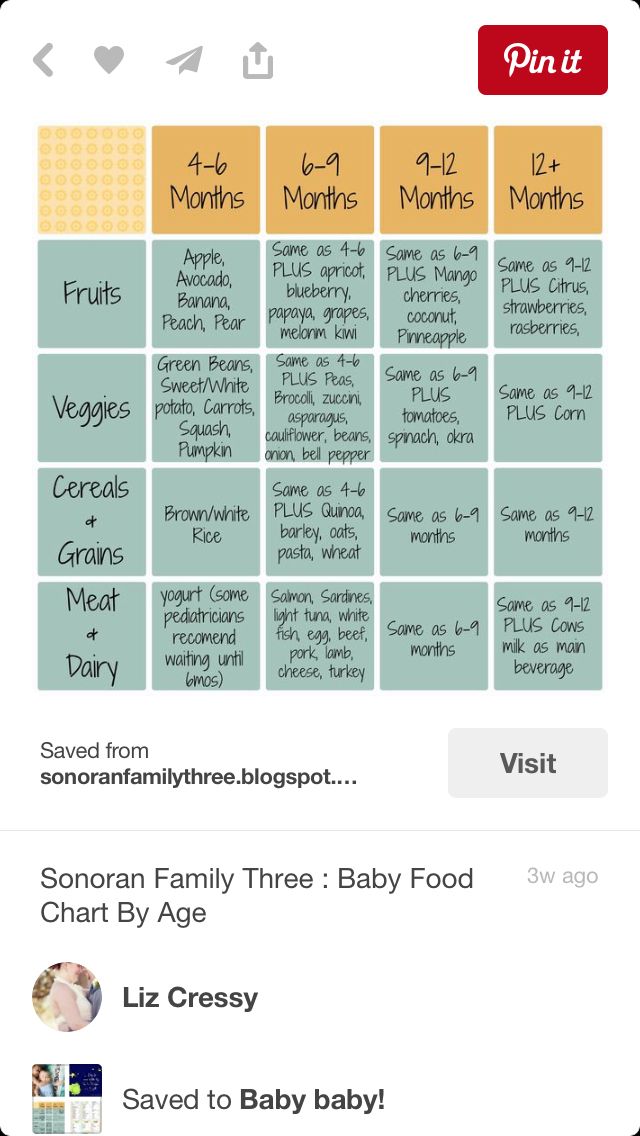 Taking into account children's age, the daily amount of food is distributed over a certain number of feedings - the younger the baby, the more often he eats and the smaller his portion.
Taking into account children's age, the daily amount of food is distributed over a certain number of feedings - the younger the baby, the more often he eats and the smaller his portion.
Over time, the intervals between meals increase due to the skipping of night feedings. The portion that the child missed is distributed between daily feedings. Consequently, the portion increases, and the frequency of feeding decreases.
How often to give the baby a mixture per day, including how many times to feed the baby at night on the IV, is calculated by the doctor for each specific baby, taking into account his age and weight parameters.
Read also
- about what determines the amount of formula a baby eats and how to calculate how much formula a baby needs
— Polina Alexandrovna, the schedule has been drawn up, but the child eats little or rarely — should I be worried?
— If the weight gain is within normal limits, then the baby is getting enough nutrition. It happens that children eat less than the norm, but at the same time they fulfill their needs, do not lag behind in physical and psycho-emotional development, which means that for these children the norm is less than average.
It happens that children eat less than the norm, but at the same time they fulfill their needs, do not lag behind in physical and psycho-emotional development, which means that for these children the norm is less than average.
The child eats little or rarely, the weight is added poorly - it must be shown to the doctor.
— Is it worth it to force a baby to live according to the regimen at night if he does not wake up and does not ask for food, but has not eaten the daily allowance?
- You need to watch how the child is gaining weight and growing, and monitor his condition, because situations are different.
- The baby eats normally, maintains the usual intervals and just starts to skip night feedings - it means that he has enough food during the day and it is not worth waking him up.
- The baby sleeps soundly until the morning, and during the day he gets off the regimen and starts asking for food more often - therefore, he is malnourished, and you need to increase the size of the daily portion in order to maintain the daily norm, or wake the child up for food at night.
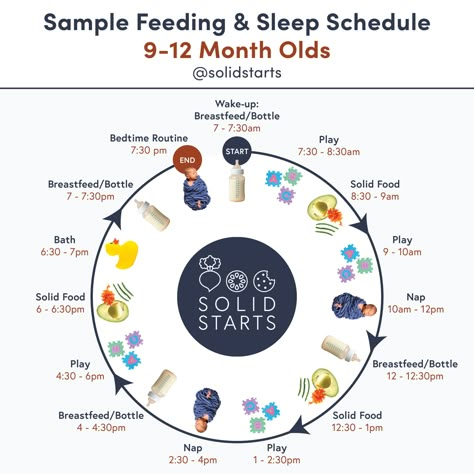 The first option is preferable, but, of course, within the age norm. It is most physiological when children eat less and less at night, and by one year they either sleep until morning or wake up once.
The first option is preferable, but, of course, within the age norm. It is most physiological when children eat less and less at night, and by one year they either sleep until morning or wake up once.
— Can children's health problems arise if the artificial feeding regimen has changed?
- You may run into problems if the diet has shifted very much. But you need to consider the reason for what is happening. When a sick child's appetite decreases, this is an adequate response to poor health, and it is not necessary to force-feed him. After recovery, he will try to compensate for the lack of food in the previous days and begin to eat more actively.
With the new regime, for example, due to the change in time zones, it may be difficult for the child to adapt, but this does not mean at all that he will be worried for a whole month. After one or two days, the regime returns to normal. And, of course, without the need to change the mode is impractical.
— Polina Aleksandrovna, tell us about the main advantages of MAMAKO ® baby food.
- The manufacturer has a fairly wide range of products. Parents can choose food according to the age and needs of their baby. With age-adapted milk formulas, it is easy to maintain an artificial feeding regimen from birth to three years. Porridges, mashed potatoes and cream soups are optimal for complementary foods. What is especially valuable, all these products are made on the basis of goat's milk, which children digest more easily and better than cow's milk and which is considered more suitable for children's nutrition. A child who initially tried the "goat" formula, and then switched to complementary foods with the addition of goat's milk, will have an easier time accepting them.
The composition of the milk formula is maximally adapted to children's needs, but still it is not saturated with absolutely all the components and biologically active substances that are found in women's breast milk.




